Sunday drives in Alberta, weekend escapes in Quebec, Nova Scotia and PEI, backcountry hikes in the Yukon and Saskatchewan, a spirit horse encounter in Ontario, historic hideaways in British Columbia and Newfoundland – plus tips on where to find a fantastic bowl of pho in Manitoba. Read on for great advice from Canadian travel writers who share their local treasures.
Placentia,
Newfoundland and Labrador
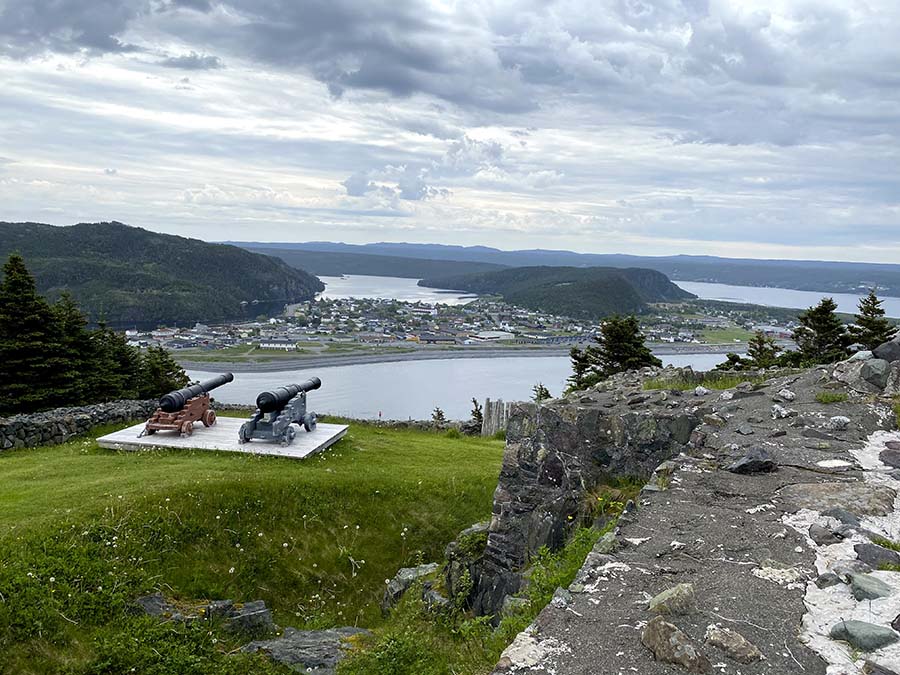
You can tell Placentia is old because the roads make no sense. Created long before cars existed, they were originally mere paths between the houses and fishing stages of this town – which itself was developed squat between a rocky beach and a small peak on an irregularly shaped plot of land in Placentia Bay.
The plaques are another giveaway. I started noticing them as I strolled past the eclectic mix of heritage homes and 1980s bungalows haphazardly separated by picket fences and laneways.
A new-looking sign declared that a rickety building was once Wakeham’s bustling sawmill. Another explained I was standing on the site of 18th-century Fort Frederick.
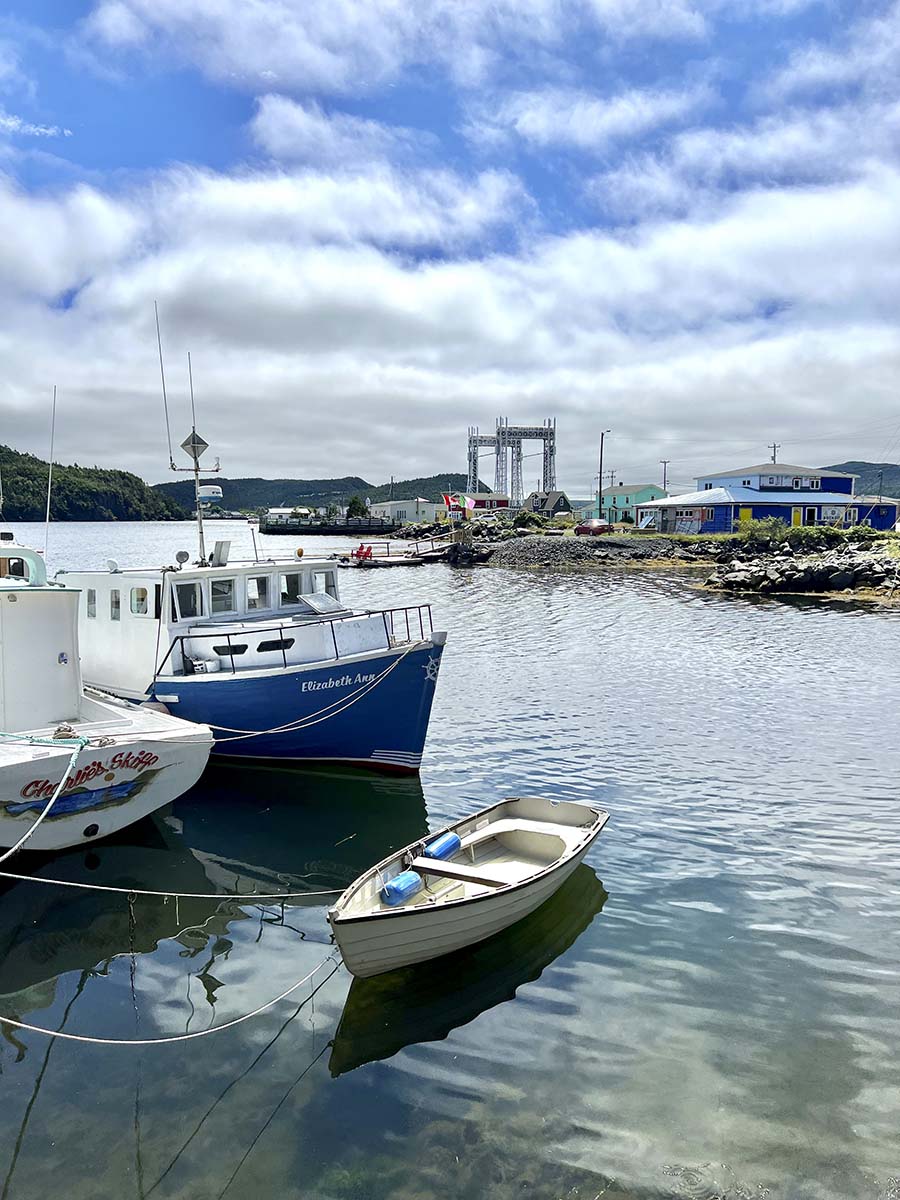
Growing up in Newfoundland, I didn’t spend much time pondering its history; I vaguely remember something about the 17th-century French colonies. But it was hard not to feel the past in Placentia. Traces of the town’s 500-year legacy are everywhere. Whether I was running my hand along the 1776 lectern at St. Luke’s, devouring Basque-style cheesecake in a 150-year-old merchant home or standing beside Castle Hill’s fortifications, surveying a beach that had cradled drying codfish for 500 years, the place was imbued with a historical ambience.
Yet most visitors disembarking at the Argentia ferry terminal, keen to gun down the two-lane highway in search of icebergs, don’t know it’s there. Nor do they know about the momentous world events that transpired just off Route 100.
Placentia is a town of serial renaissance – and names. First it was Beothuk fishing grounds, then a Basque fishing station in the 1500s (there’s some evidence Plasencia comes from Plentzia, a Basque seaport town it resembled). France took hold of Newfoundland and made Plaisance the first official French colony in 1662. In 1713, after the Treaty of Utrecht, Placentia became an English settlement.
Today, 18th-century cannons can be found throughout town, left over from long-ago combat. At Castle Hill National Historic Site, visitors can learn about the struggles for Placentia’s wide beach, which was perfect for salting cod to send back to Europe.
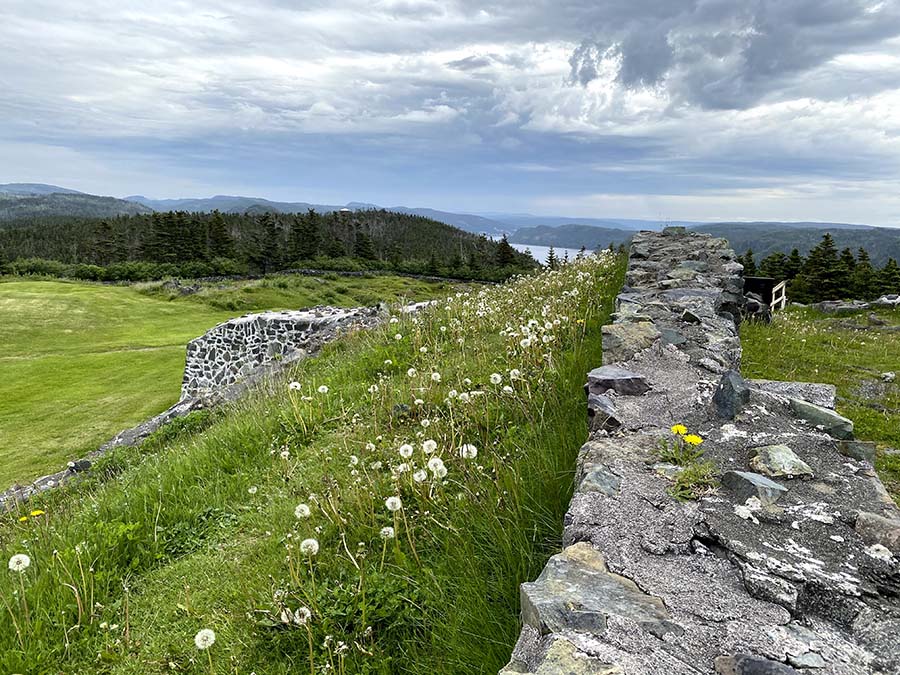
During the Second World War, another transformation: an American Naval Air Base was built in neighbouring Argentia. It gained fame in August 1941, when Winston Churchill and Franklin Roosevelt met aboard the USS Augusta in Placentia Bay to draft the Atlantic Charter.
By 1943, more than 12,000 military personnel were stationed at McAndrew Air Force Base, bringing employment, infrastructure and a movie theatre. At Windjammer Club, Frank Sinatra and Johnny Cash performed for the thousands of soldiers who, much to the chagrin of locals, were eager to date (and marry) local women.
You can still stroll the sprawling flats on Backland Trail to see bunkers and vast concrete slabs left vacant after the base was decommissioned in 1994, a year after Argentia was incorporated into Placentia.
In recent years, the Argentia port authority has transitioned to constructing off-shore oil platforms and is now proposing the area be developed for wind-powered hydrogen production.
Energy (and money) is also being put into tourism: In 2020, the Placentia Area Historical Society bought the Anglican church for $1 and turned it into the St. Luke’s Cultural Heritage Centre, where they host arts events (and sometimes an escape room). Through a small laneway is O’Reilly House Museum, filled with Basque headstones, military photography and exhibits on resettlement.
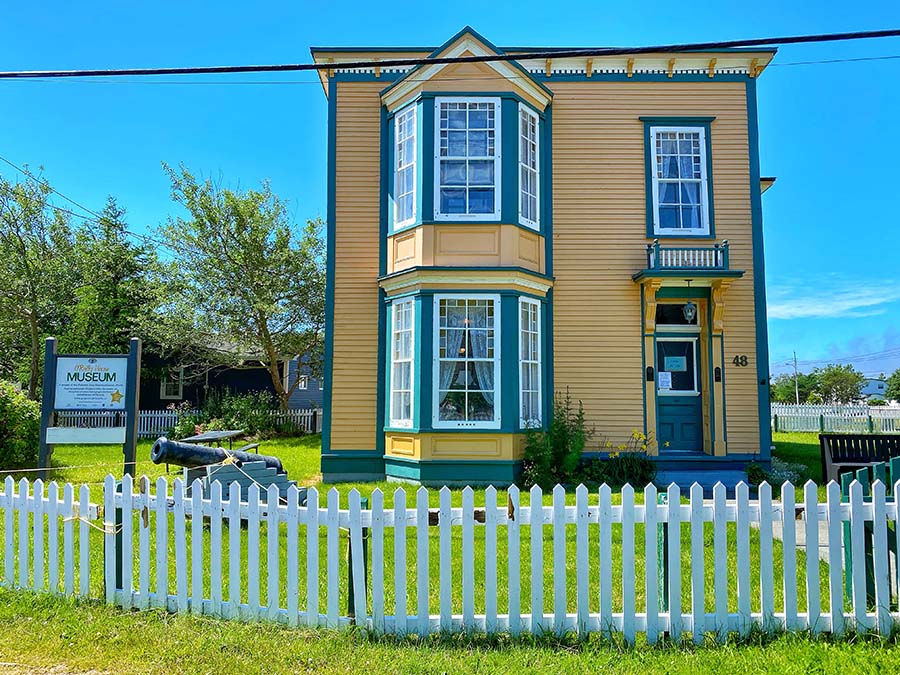
Even dining in Placentia is steeped in history: Placentia Area Theatre d’Heritage offers dinner theatre with performances covering everything from USO shows to the Seven Years’ War. At the Three Sisters Pub, located in an 1883 heritage merchant home, patrons sip on local craft beers and polish off bar-food favourites or fancier choices such as spaghetti carbonara. There’s a new Vietnamese restaurant, too, and another pub opening soon.
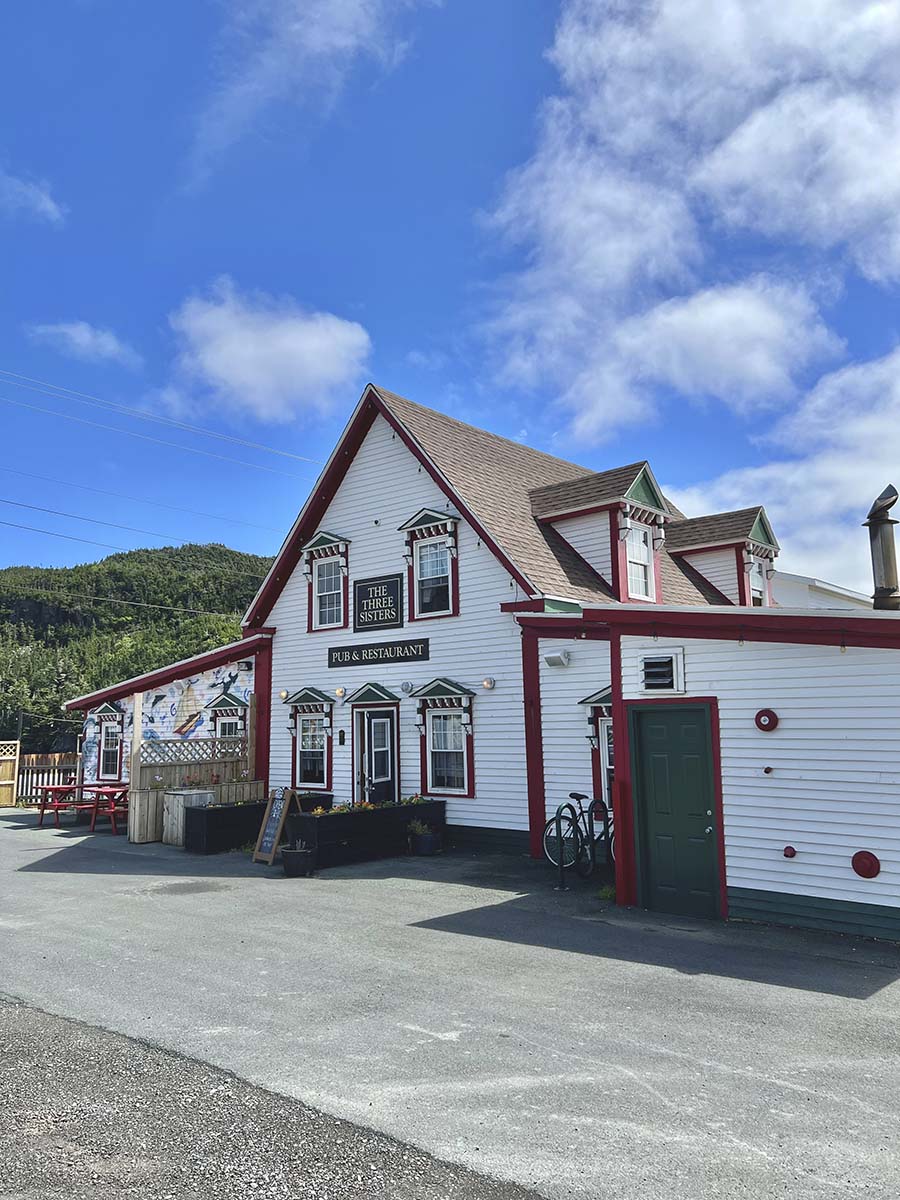
At Rosedale Manor, a B&B inside another restored historic home, new owner Christopher Newhook tours me through renovations he and his wife Lori Pretty completed recently. Guests typically stay for just one night, he says, on their way to the ferry to Nova Scotia.
Still, it’s enough time for them to discover the magic of Placentia. Many of B&B’s reviews include the phrase “if only I’d known,” Newhook says.
If only they had known about Placentia, they would have stayed longer.
Gabby Peyton lives in St. John’s, Nfld.
Chatham-Kent,
Ontario
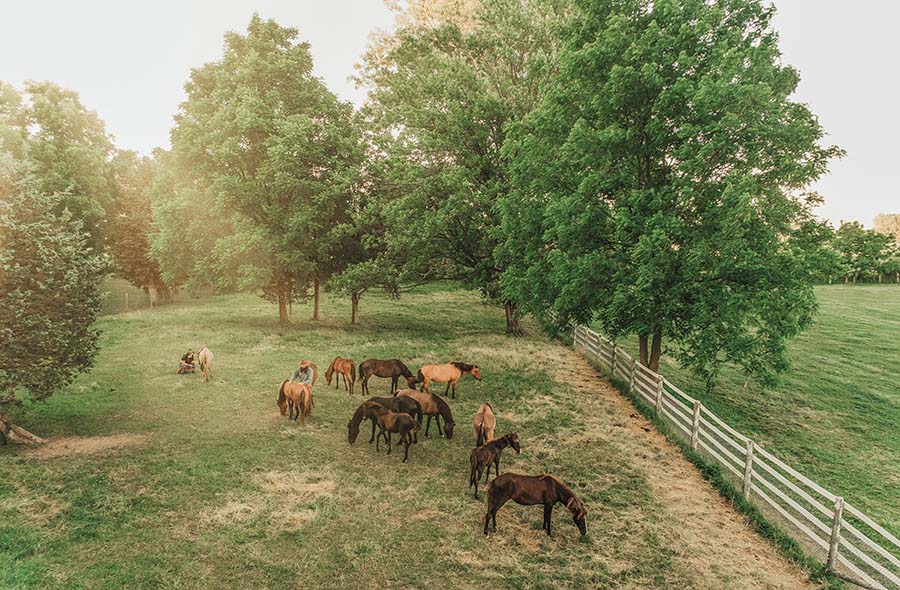
I was intrigued when I read about Ojibwe Spirit Horses, believed to be the only breed developed by Indigenous people in Canada. The horses once roamed freely in Ontario’s Great Lakes region – but only four remained by 1977, the result of culling ordered by colonizers.
Fortunately, conservation efforts have brought the breed back from the brink. And in Chatham, Ont., a threehour drive southwest of Toronto, I discovered a bucolic setting where I could spend some time getting to know the modern Ojibwe Spirit Horse, descended from the rescued four, who mated with Spanish mustangs.
John Basden and his wife, Terry Jenkins, run a spirit horse encounter at their farm, where they also introduce visitors to Basden’s Métis traditions. For a truly immersive experience, you can spend the night in a tipi, which is my plan.
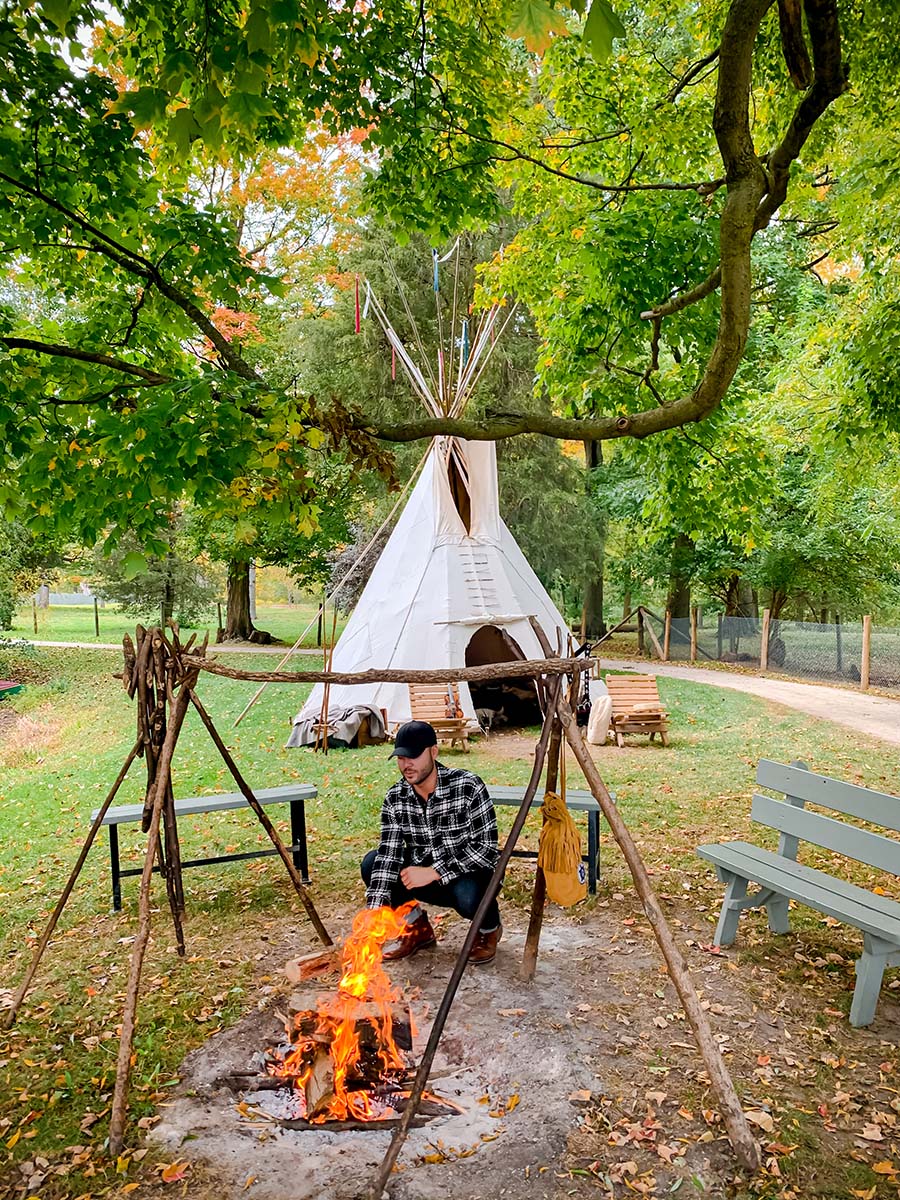
My partner and I arrive on a warm autumn day and I immediately spot the tipi, which sits between a small pond and a large sugar maple. It’s named the “Grandmother Tipi,” because John’s greatgreatgrandmother lived in a similar one growing up in Tecumseh, Ont. It’s wrapped tightly in canvas, which is joined together at the front with lacing pins made out of wood. Two smoke flaps give way near the top, exposing several poles that pierce the sky.
I place my belongings inside and take a quick look. A slow-burning fire sits in the centre and several mattresses dressed with wool and furs sit around the perimeter. It’s modest yet cozy, and I can’t wait to sleep there.
Soon after, we are introduced to our guide, Andria Dyer from the Chippewas of the Thames First Nation. She will walk us through our first encounter with the horses and stay with us for the remainder of the day.
She begins with a smudging ceremony, to let the smoke cleanse the soul before we meet the animals: “We smudge so that we can leave any negativity out here and join the horses in a purified state.”
We enter the gate of the horse pasture, located just a few metres away from the tipi. As she proceeds to drum and chant, one by one the horses begin to surround us, like children ready for story time. It’s awe inspiring.
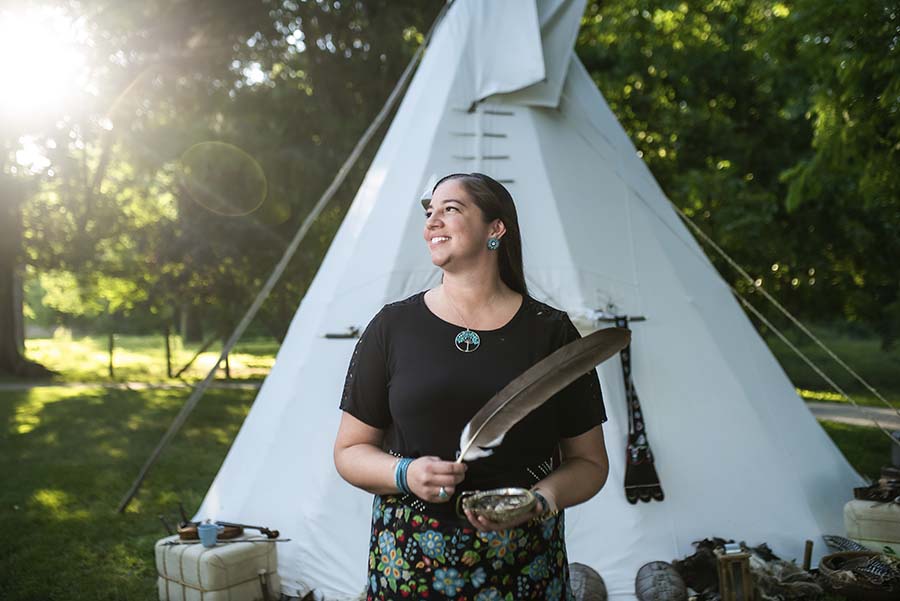

These horses, all various shades of brown, are not built for riding. Standing at 1.2 to 1.4 metres high, they are relatively small in stature and have the innocent curiosity of puppies. Many people come here for equine therapy as a way to treat PTSD, depression and more – not surprising given the horses’ sweet temperament.
Two younger horses approach me and I slowly reach out my hand. I pet their thick manes and notice their hairy ears, a common trait in the breed. They rub their muzzles against my arm, encouraging me to continue and I feel an instant weight lifted off my shoulders. Could this be the therapy I didn’t know I needed?
Later, we huddle by a fire, where our guide begins singing and drumming. She asks us to repeat a few chants; at first, I am shy, but I soon find myself leaning into it. While sipping on warm cedar tea under the stars, we listen to stories that have been passed on from generation to generation.
That night, although the air is cool, the crackling fire and wool blankets keep me warm in the tipi. I feel steeped in history as I lie there, mesmerized by the flames. I hear the nearby neighs and whinnies of the horses. To my surprise, they’ve gathered around the wooden fence close to the tipi, as if they were protecting me. It’s no wonder why they’ve been referred to as spirit animals by the Indigenous. I feel a strong sense of peace as I start to doze off.
Luis Cabrera lives in Toronto.
Dorothy,
Alberta
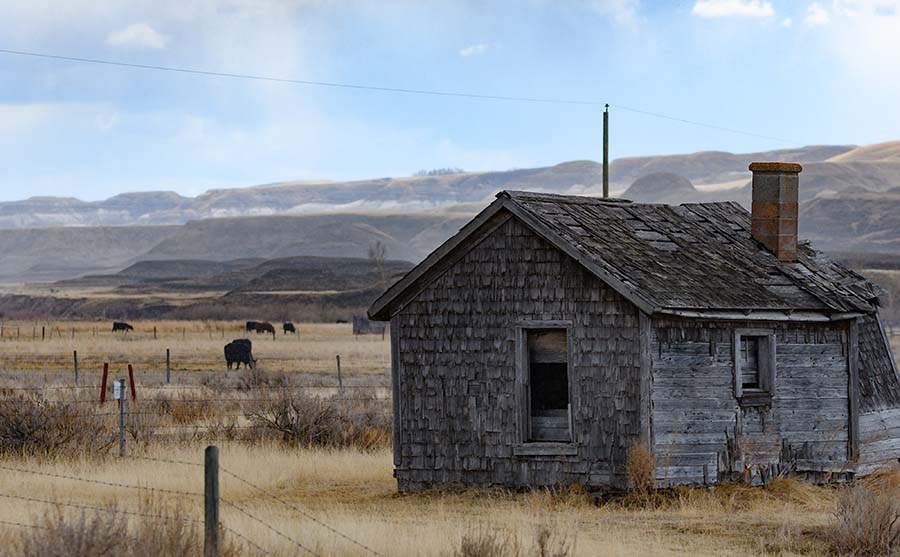
If you’re exploring Alberta, everyone knows you go to Drumheller for the dinosaurs, Lake Louise for the cartoonish blue calm of Canada’s most famous body of water, and the Icefields Parkway for the glaciers that measure time. But Dorothy? You go to Dorothy for the Sunday drive.
The first time I went to Dorothy was by accident. I was shortcutting from A to B and didn’t know Dorothy existed. You don’t go to Dorothy when you’re in a hurry. Dorothy is for stopping, gasping, imagining. It is for wandering and wondering and giggling to yourself about a secret place that’s barely there.
I was driving east from Calgary that day and ended up on Highway 848, which resembles a highway about as much as a cow resembles a crow. Then the Prairie plateau cracked open. I drove downhill, confused at the switchback. This is the land of canola fields and combines, not elevation drops and mountain goat terrain.
At the bottom, a one-lane bridge with a wooden surface delivered me into the Red Deer River Valley and a lesser-known slice of Alberta’s Badlands.
Dorothy is something between a ghost town and a mirage. It is quiet and empty, sprinkled with signs of life from yesteryear. But, wait, people live here? Now? Appears so.
Dorothy’s most famous landmark, a faded wooden grain elevator, is proof that there was once community and commerce here, but progress chose a different path. The wind robbed the elevator of its roof years ago.
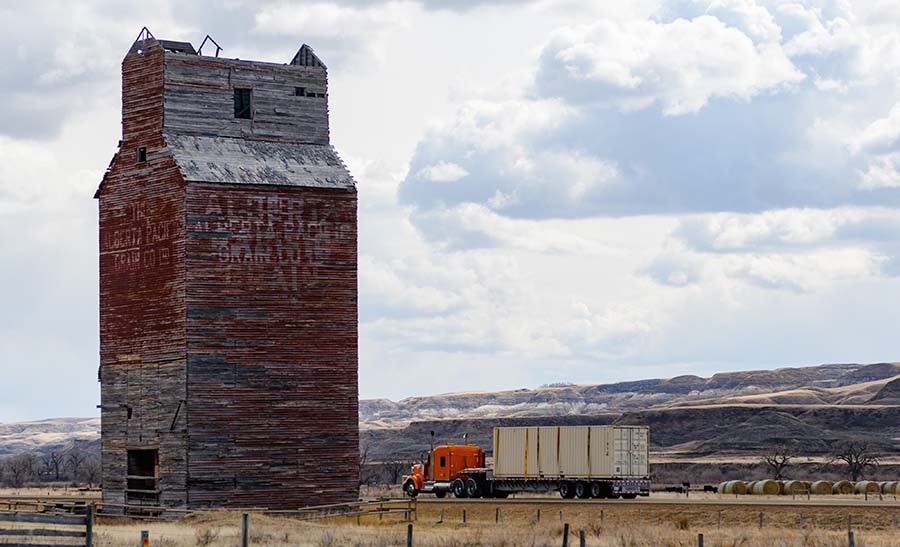

The elevator is whatever you want it to be. It is defiant and majestic. It is tired and rotting. It is, regardless of what adjectives you apply, photogenic.
I had to rush through what’s left of Dorothy that day, but now I go out of my way to linger. For me, the joy is in the journey. The sudden transition from the plateau to the valley is a delight. The valley walls are weathered, revealing Earth’s layered interior: shades of red, brown, grey and white, in the muted palette of Alberta’s Badlands. There are cacti and flowers and green prairie grasses. There’s a faded blue Valiant photographers can’t resist.
Get out, stretch your legs. Walk around the aging farm implements and read the little information cards. While the Alberta Pacific Grain Co. elevator (1928-1951), Mashon Bros. Store (1937-1979) and other structures have largely been left to the elements, a handful of buildings in Dorothy have been restored, including the hamlet’s places of worship. Between the two tiny churches, there might be more pews than people in Dorothy.
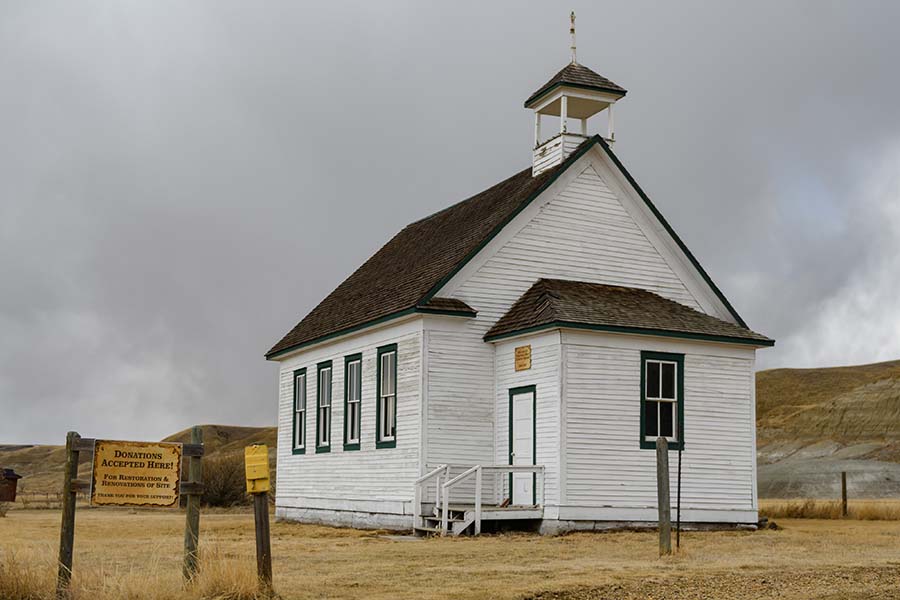
The community’s Catholic church started out in 1912 as the Wilford School, which shuttered in 1933. Church supporters bought it for $50 and moved to Dorothy, where it became Our Lady of Perpetual Help. It opened in June, 1944, and held its last mass Oct. 22, 1967. Poke your head in, sign the guest book.
The United Church is just a few metres away. Dorothy’s United followers paid $50 for their building and had it moved to town, too. The church hosted two weddings in 1943, and its last service in 1961. On July 14, 2012, the church held the first wedding of its revitalized era.
And then there’s Dorothy’s blue telephone booth, right next to a park bench and a sign that says “LOCAL TRAFFIC ONLY.” Inside, there is a collection of items that can correctly be classified as communications equipment but more accurately described as a Dad joke. Go for a drive. You’ll see.
Carrie Tait lives in Calgary.
Powell River Historic Townsite,
British Columbia
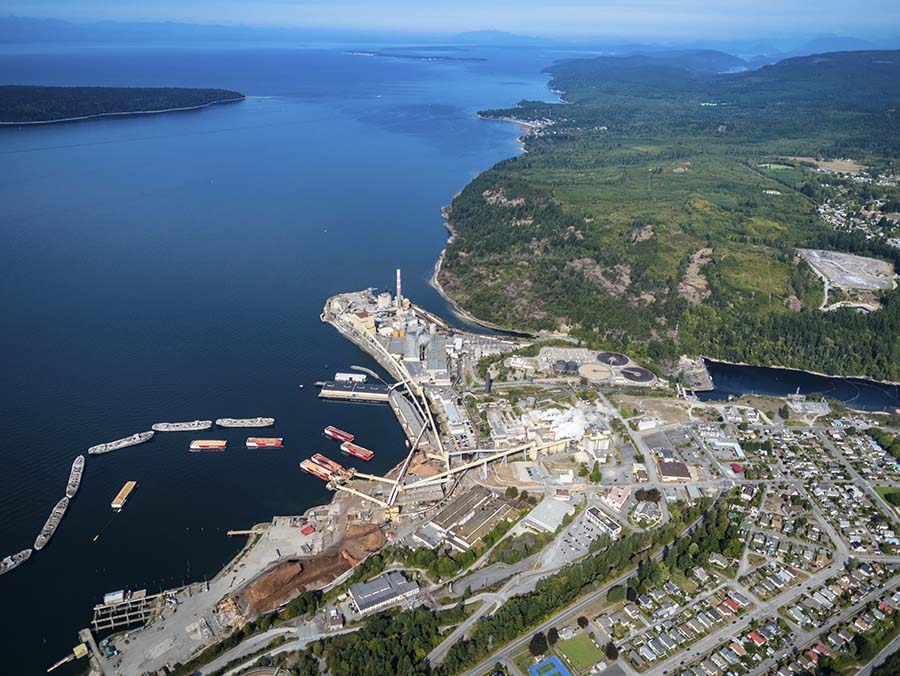
Ever since he was a little kid, Kelly Belanger wanted to run a Tudor-style hotel. While vacationing on British Columbia’s Sunshine Coast more than a decade ago, he drove into Townsite, a fading forest industry town just north of Powell River. That’s when he first laid eyes upon the Old Courthouse Inn, a Tudor building in a community full of architectural treasures.
The hotel and café were for sale. Within a week Belanger bought it and was packing up his life as a cook in the Alberta oil patch.
“I fell in love with it immediately. I was like, ‘Wow, this place really does exist,’” he says, chuckling at the improbability of an obscure childhood dream coming true decades later.
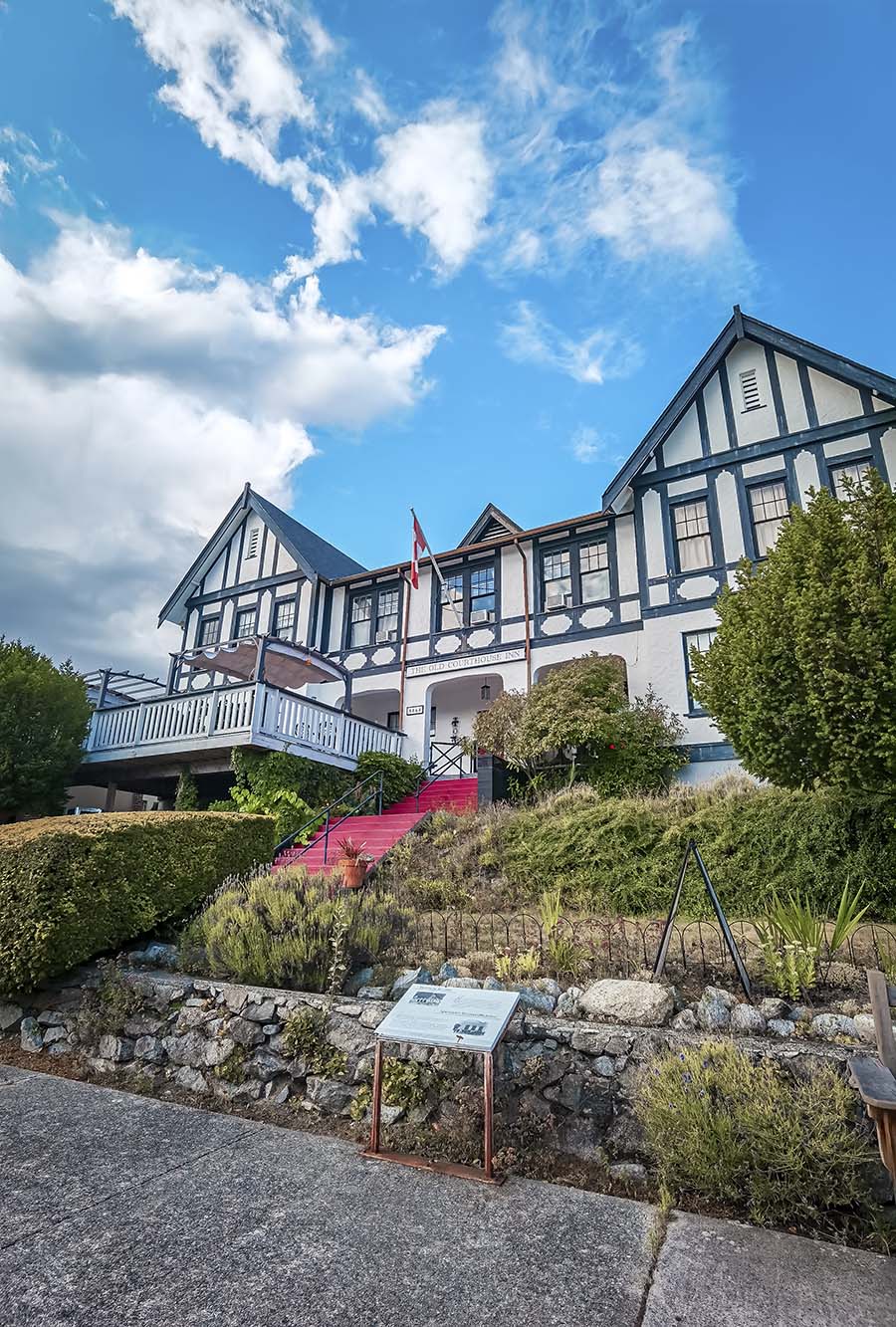
Two blocks away on the waterfront, smokestacks, massive conveyors and imposing towers from the pulp-and paper mill, mothballed in 2020, form an industrial backdrop fit for Gotham City.
The fact that Townsite owes its existence to big timber isn’t unusual. However, the way this town developed certainly is.
In 1912 the Powell River Company began operations, eventually becoming the world’s biggest newsprint producer. Its owners hired architects to plan a company town that was more than just a warehouse for workers. Lovestruck couples once spun across the sprawling horsehair-sprung wooden dancefloor of the still fabulous Dwight Hall. On weekends, folks headed to the gorgeous Spanish Revival-style Patricia Theatre. Homes were built in the style of Arts and Crafts, characterized by pitched roofs with deep eaves, dormer windows and shady porches perfect for sipping lemonade on a hot summer’s day. In 1995 the federal government declared Townsite a national historic site, recognizing its more than 400 significant heritage buildings.
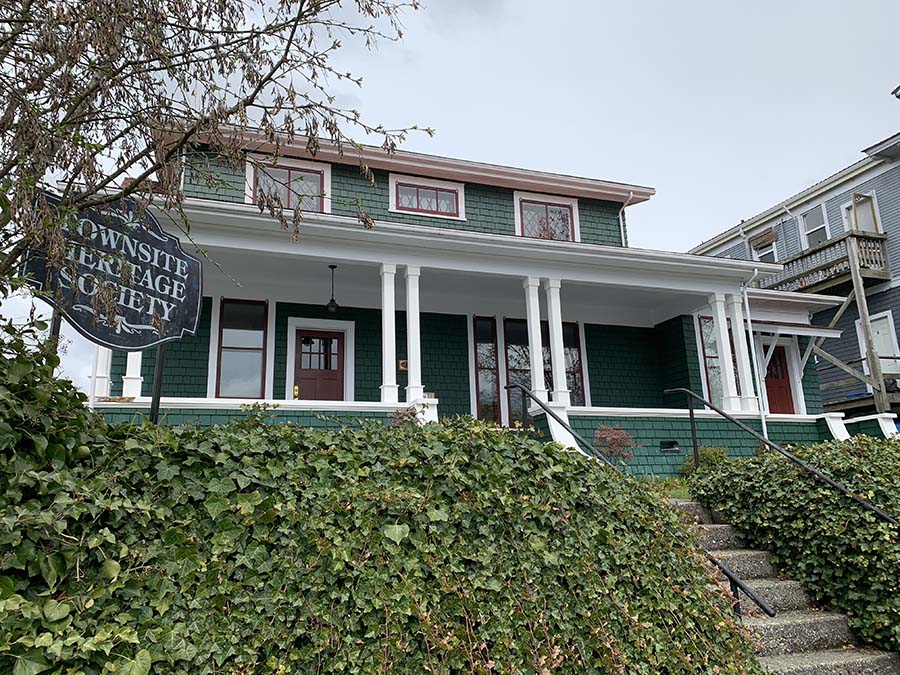
Today architecture geeks, small business owners and real estate refugees are charting a new future for this town wedged between mountains and ocean.
Next door to the Old Courthouse Inn, Townsite Market is bustling to life in an artful reimagination of the Company Stores, a striking Bauhaus-style modernist – and prototypical shopping mall - the mill owners commissioned in the 1940s.
A lip-smacking aroma fills the air as Colleen McClean, a former culinary instructor at Vancouver’s LaSalle College, pulls pain au chocolats from the oven at Hearth & Grain. A half dozen kids are scaling the walls at the Powell River Climbing Co-op, while at Townsite Fruit & Veg owner Martin Williams, an ex-Vancouverite carpenter, is stocking the shelves with organic produce.
At Townsite Brewing, across the street from the market, early afternoon sippers are starting to arrive at this repurposed art deco brick two-storey. The sound of sea lions barking around the harbour breakwater drifts through an open window.
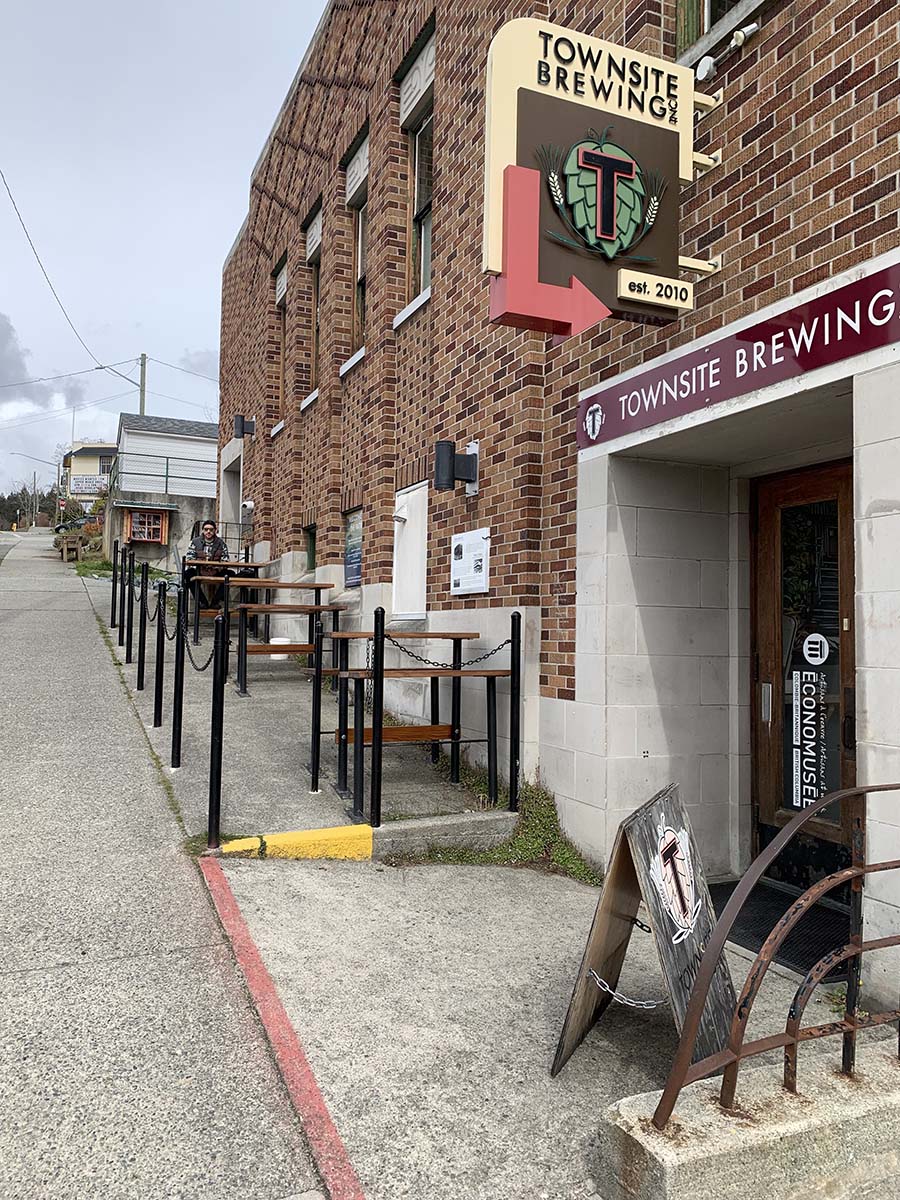
“I was born and raised in Powell River and I’ve seen Townsite turn from a blue-collar mill town into an eclectic, artsy and outdoorsy community,” says Cara Harmer, the cheerful tasting room manager, as she pours a sleeve of Muscles from Brussels IPA, a hop-forward beer that reflects brew master Cedric Dauchot’s Belgian heritage.
A few blocks up Ash Street at the Patricia Theatre, Creed III is on the marquee. Restoration is a continuing work in progress at this beloved theatre built in 1923 – and so is reconciliation.
Up until around 1970, First Nations were permitted to sit only in a segregated upper balcony at the theatre – if those dozen or so seats were filled, they were turned away. “In a lot of ways, this building is a symbol of racism to me,” Maynard Harry says.
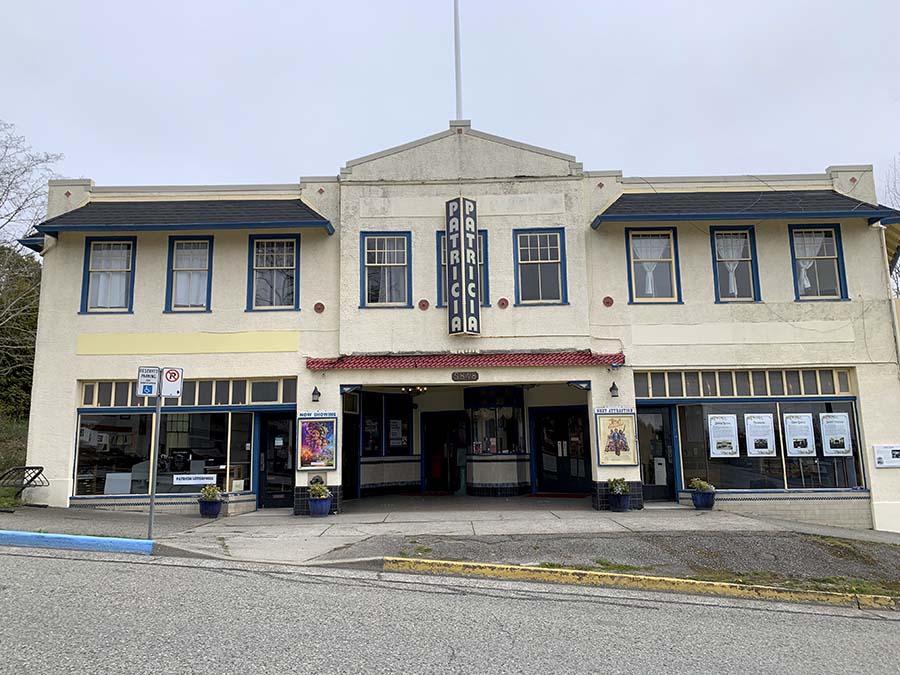
The former chief councillor of the Tla’amin Nation has mixed feelings whenever he strolls through Townsite. More than a century ago, the Tla’amin were turfed from their village at the mouth of the river to make way for the pulp and paper mill.
But the theatre is also a symbol of a new path forward for Townsite. The local film society is now called Qathet Film Society (quathet means living and working together), dropping any reference to Israel Powell, once superintendent of Indian Affairs in B.C. and a proponent of residential schools.
From a one-horse industry colonial town to a living architectural gem with a big heart, the Townsite fable seems to get more and more interesting the older it gets.
Andrew Findlay lives in the Comox Valley on Vancouver Island.
Hirtle's Beach,
Kingsburg,
Nova Scotia
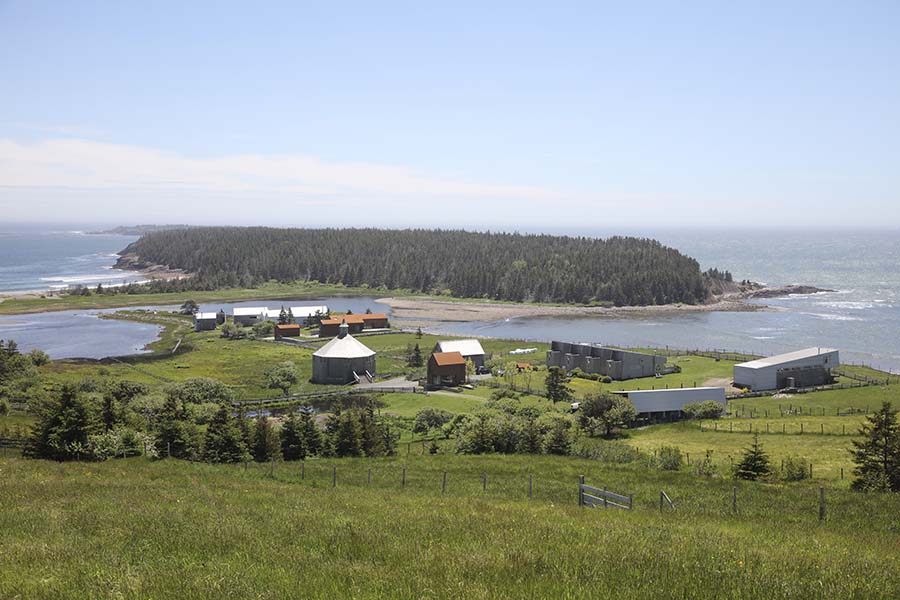
I always knew we were close to Hirtle’s Beach when the candy-coloured houses we saw on our drive were replaced by ones clad in unpainted wooden shakes that had turned grey from weathering. Before I could even see the ocean off Nova Scotia’s South Shore, I’d roll down the windows so its scent could perfume our car.
If we were visiting in July or August, we’d pack a cooler, a blanket and a pop-up sun shelter, moving from water to sand and back again until we’d run out of food or grown fatigued from the heat. On colder days we’d get out of the car for only a few minutes, strolling alongside the water while the wind whipped through our hair. Its appeal never faded.
Our perch for one weekend visit was one of the cottages at Shobac, a 1½-acre farm site that overlooks Hirtle’s Beach. We’d discovered the beach when my husband, an architect, had read about the unique properties Brian MacKay-Lyons, one of Canada’s most esteemed architects, had either built or moved out there.
We were staying in the Schoolhouse, built in 1830, that MacKay-Lyons’s brother had attended when they were growing up in Yarmouth, N.S. When the architect came across it decades later, it was in a sorry state: A farmer had let his cattle live inside. MacKay-Lyons bought it, had it dismantled and then transported it to Shobac to be reassembled beside the spectacular octagonal post-and-beam barn he’d similarly rescued and that now hosts summer weddings.
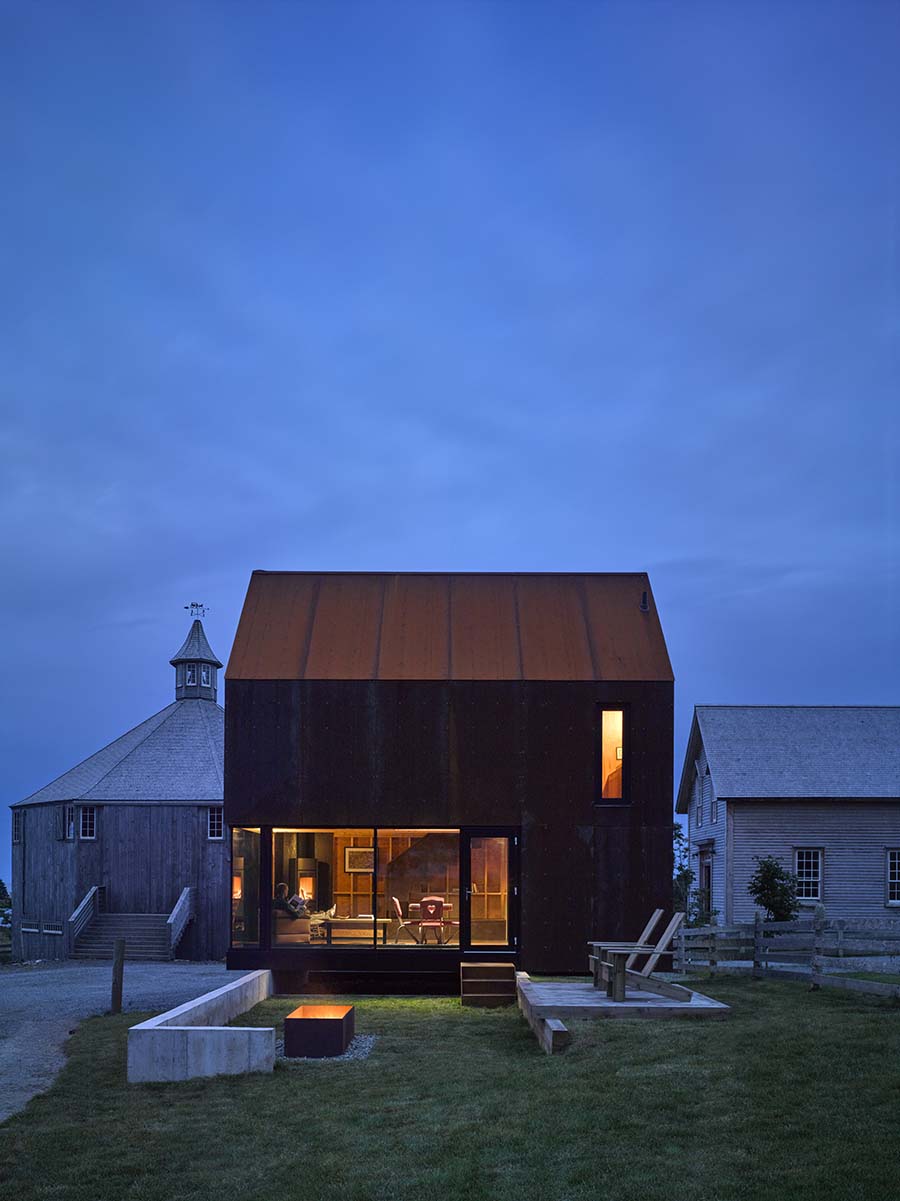

“It was disappearing and if we didn’t save it, no one would,” MacKay-Lyons explained to us as we sat by the fire in the Shobac Studio, a live-work space on the property. He and his wife, Marilyn, had invited us for a dinner of spicy roasted haddock, bacon-wrapped scallops and a rustic carrot cake from the excellent Rose Bay General Store & Bistro nearby (we ended up having lunch there twice – the highlight was a lobster Caesar salad).
The Schoolhouse’s renovation was impressive: both modern and timeless. We ate breakfasts at the long table in the fireplace-anchored great room while sitting on the building’s original benches and sipped coffee and read books from the caramel leather chairs while marvelling over the ocean view. But the best parts of Shobac were outside: From the Schoolhouse, we cut through the farm as sheep, their coats freshly shorn, grazed tall grasses around a small pond.
There was a crispness and fullness in the air from being so close to the water and I started to feel my skin plumping, my blown-out hair developing a halo of frizz.
And then, the great ocean reveal we’d grown to love so deeply: a three-kilometre stretch of pristine white sand, bordered on one side by drumlin cliffs, houses evenly spaced across it. We were approaching it from the western side and because the tide was in and the beachhead was so narrow, we walked across rocks that sounded like teacups clinking together. We only did a portion of it that day, but more adventurous beachgoers can walk east along the beach to the start of Gaff Point Trail, an occasionally rugged path that takes about two or more hours to traverse.
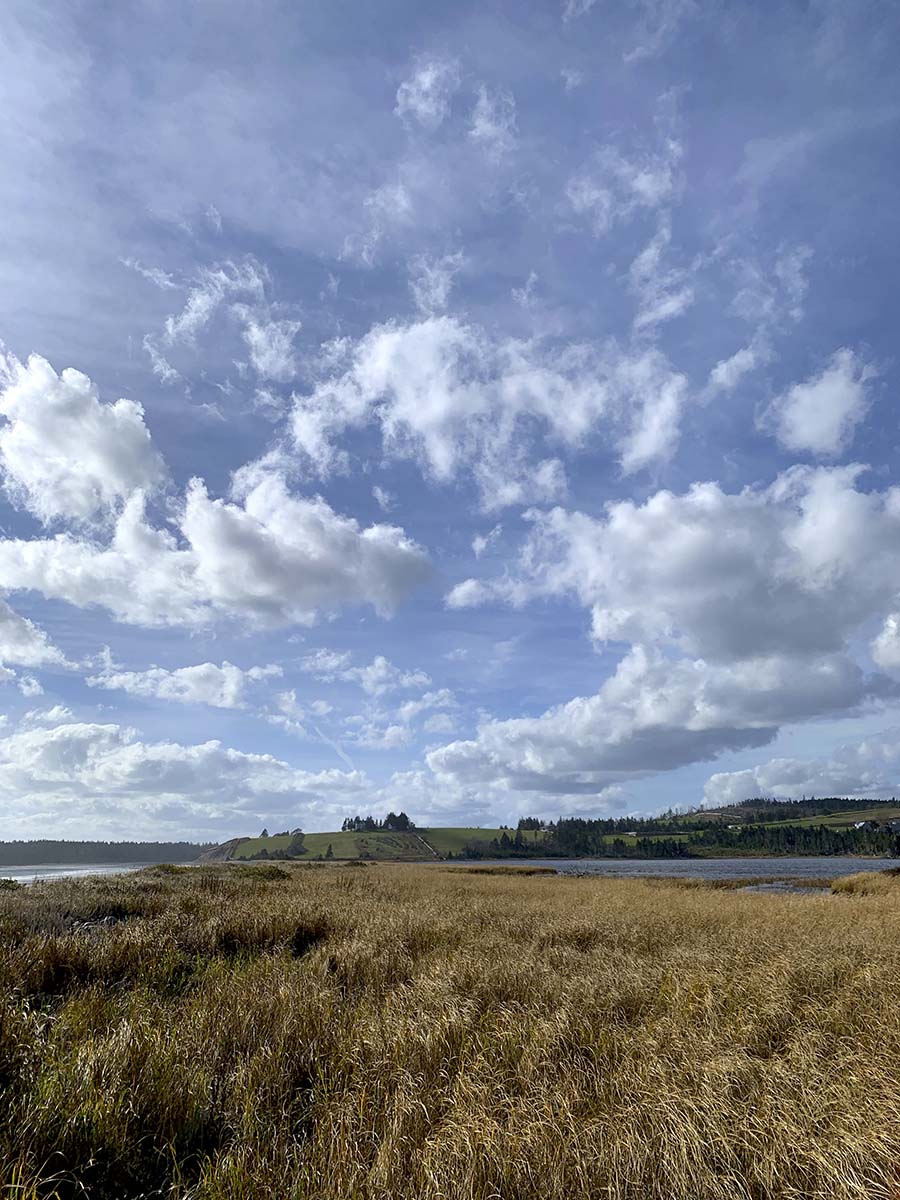
I have seen the Atlantic Ocean from many vantage points, but there is something mercurial and otherworldly about the water at Hirtle’s Beach. On sunny days with a cloudless sky, it’s a shade of azure that can remind you of the Mediterranean Sea. On slightly overcast ones, the cloud-sheathed sky can make the water glisten and sparkle like the display cabinet at Tiffany & Co. On stormy days, massive inky waves turn to thick foam when they crash on the sand and rock. The sounds, smells and astonishing views of Hirtle’s are captivating in any weather.
Dakshana Bascaramurty lives in Halifax.
Winnipeg,
Manitoba

Having lived in several Canadian cities and dined in a fair number of Vietnamese restaurants across the country and Vietnam, I consider myself a pho connoisseur. After I arrived in Winnipeg two years ago, it didn’t take long for me to notice that all of the noodle soups I ate in this prairie city were particularly spectacular. After work, when I need the comfort and umami of a large bowl of warm noodle soup, I am glad for all of the delicious options here.
Each pho restaurant has its own method of flavouring broth and uses different rice noodles; in Winnipeg, amazingly, many of the phos are a delight. The broths are rich, complex and flavourful with a harmonious blend of aromatics; the noodles are cooked to perfection – not too tender and with a good amount of chewiness – and the meat-to-noodle ratio per portion is always just right.
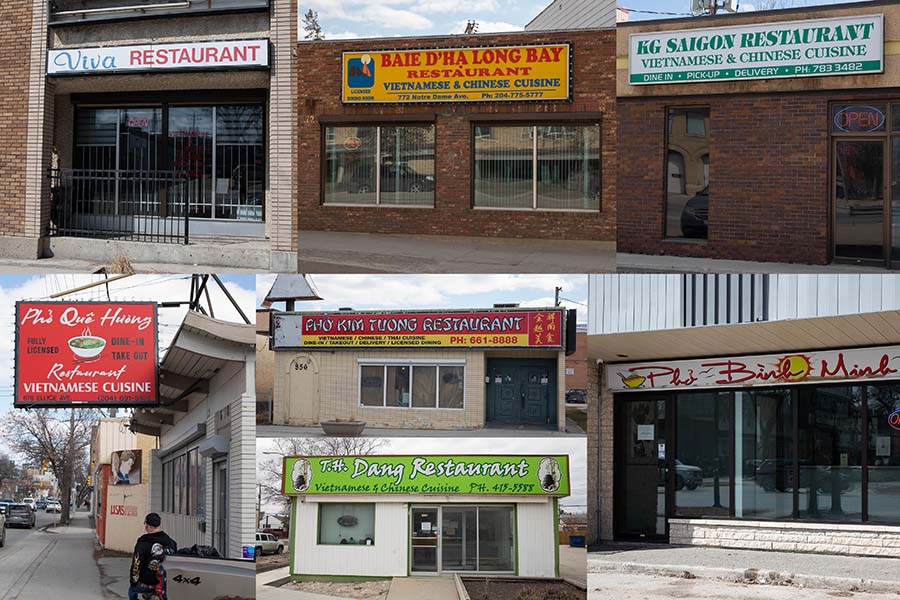
Tuyen Nguyen, owner-operator of Ha Long Bay Restaurant on Notre Dame Avenue, arrived in Canada in 1984 as a refugee from Vietnam, having been offered a new life in Winnipeg. A few years later, he met his wife, Hoa Vo, originally from Ho Chi Minh City.
The couple took on odd jobs to get by and in 1988, when Nguyen’s friend offered the couple a chance to buy his struggling Vietnamese restaurant in the West End, they took the gamble.
The couple grew to like Winnipeg and settled into their home, and now their restaurant is one of several dozen Vietnamese eateries in the city. A staple on their menu is beef pho, which they make by boiling bone marrow for 8-10 hours to make the broth. Another popular item is the beef satay pho, which is made with a chicken broth and tastes slightly sweet with salty flavours and a subtle spice.

Further south is another pho hot spot, about two kilometres away on Ellice Avenue.
Kiet Tran and Duchoa La opened their restaurant, Pho Kim Tuong, in 2012. They immigrated to Winnipeg 43 years ago and before opening a Vietnamese restaurant, they had a Chinese take-out spot and a Chinese restaurant.
“They were trying to escape hard times,” says their daughter Jen La, adding that, at first, “I don’t think it was that great for them in Winnipeg either.”
Until recently, all of the cooking at the restaurants was done by Tran, who boils beef bones for 24 hours to make the pho broth, then adds spices and aromatics such as star anise, cloves, cinnamon sticks, nutmeg, lemongrass, daikon and fennel seeds. Pho favourites include spicy beef pho with peanuts, a satay seasoning and Thai chilies; and bun bo Hue, a noodle soup made with both beef and pork, served with round noodles from the Hue region in Vietnam.


Recently, the couple’s three daughters, who all have full-time jobs elsewhere, have taken over, cooking and running the restaurant so that their parents, now in their 60s and 70s, can relax. Tran and La’s daughters are still using recipes passed down from their ancestors.
At one point after arriving in Canada, the couple considered a move to Toronto but ultimately decided to stay in Winnipeg because they felt the people were nicer. The city of Winnipeg lucked out. No matter how bad the weather gets, I know I can always warm up with a great bowl of pho in my city.
Jessica Lee lives in Winnipeg.
Grasslands National Park,
Saskatchewan
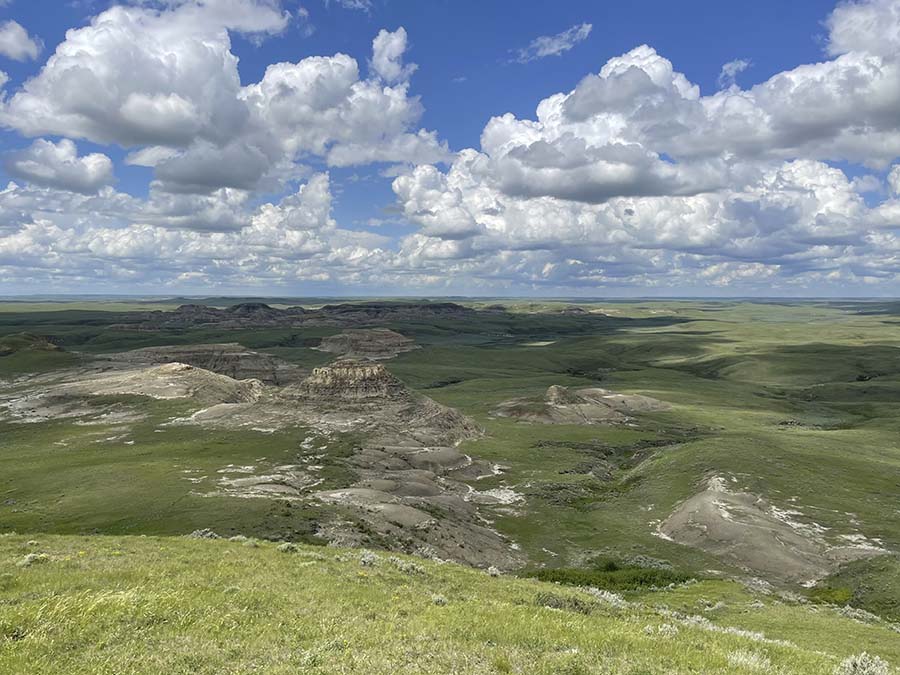
The flat-topped 70 Mile Butte, with its steep, eroded sides, towers over the land in Southwestern Saskatchewan. So named because it was a 70-mile horseback ride from a former North-West Mounted Police post, the butte doesn’t jive with the province’s popular image as a boring, relief-less landscape.
But drop south from the Trans-Canada highway at Swift Current, and the road takes you past grain fields and then rolling lands to the West Block of Grasslands National Park.
I never tire of exploring these former ranch lands that have been steadily acquired for the park since the 1980s, and regularly return with my partner, Marley, to tackle a range of hikes of varying distances and difficulty. Our favourite is the 10-kilometre Bearpaw Sea Trail, a legacy of the retreating glacial ice sheet more than 10,000 years ago.
Starting at the edge of a deep coulee, with the distant 70 Mile Butte beckoning, we pick our way down, sometimes walking diagonally to slow our descent, into another world. The hike, clearly marked in places, sometimes confirmed by dead reckoning, takes us across a rugged landscape where grasses, shrubs and cacti thrive in the gravelly soil littered with rocks. Larger boulders, known as erratics, were deposited here and there as the glacial ice melted.
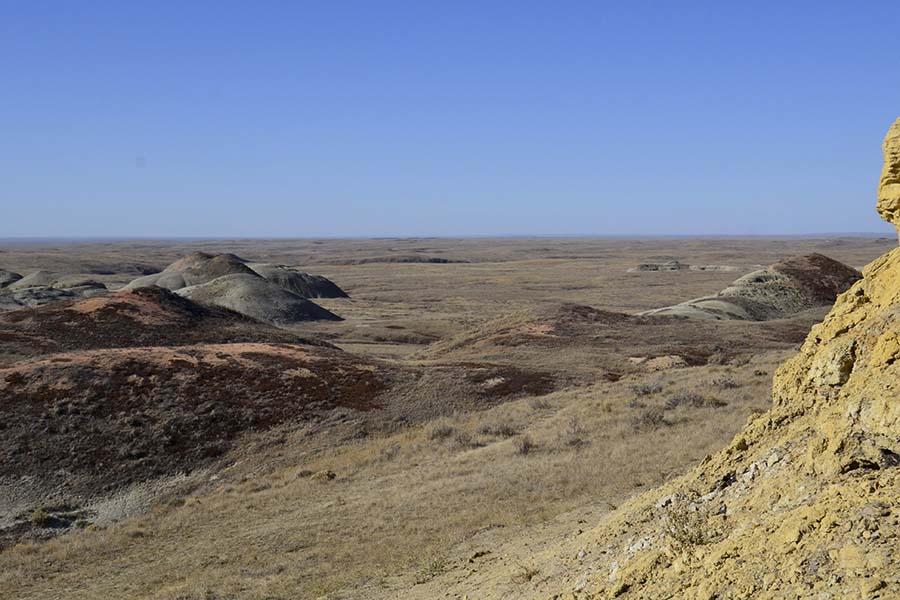
Crossing an ancient glacial spillway occupied today by the subdued Frenchman River, little more than a trickle, we tackle the butte. It’s a strenuous climb through a series of sandy hummocks that takes us to the base. Here we drop our packs, and then push on, up a steep incline at first, to the top.
The views are spectacular. A 360-degree vista, and we stand in awe looking back to where we started. Eventually, we make our way down and around Eagle Butte to our car, which had been dropped off for us.
Marley and I have done this hike in blistering heat and in wind and cold. The worst time was after a rainfall when several inches of mud seemed glued to our boots. It’s always different as we also never know what animals we’ll chance upon – from pronghorn to plains bison to rattlesnakes.
Grasslands’ West Block also has the popular 20-kilometre ecotour scenic drive, featuring a bustling prairie-dog town, set against a backdrop of steep hills and ridges and seemingly endless grassland. It’s not unusual to see a solitary bison bull along the way.
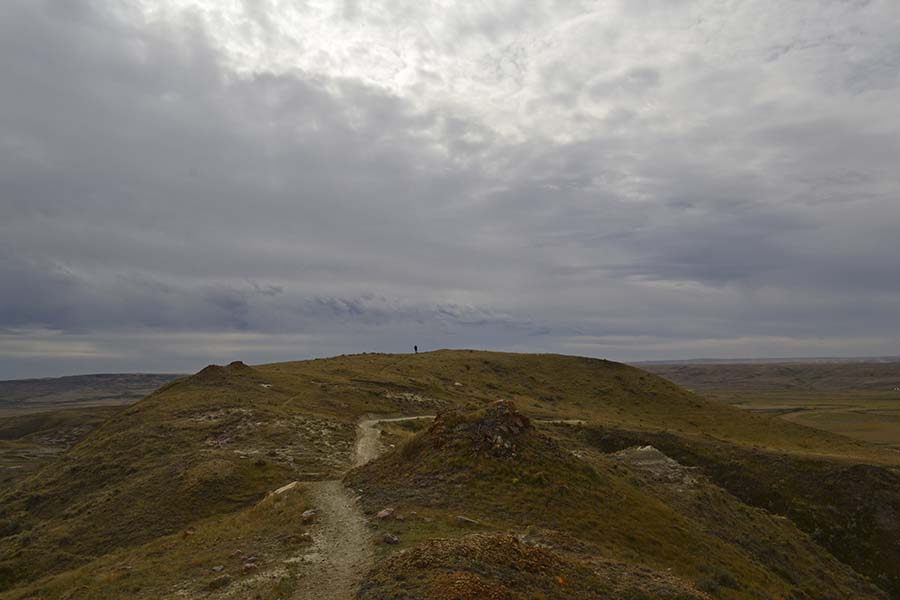

Grasslands National Park is divided into two sections – the East Block is located south of Wood Mountain, about 170 kilometres, or a two-hour drive, from the town of Val Marie. This landscape is more heavily eroded – here, dinosaur fossil remains have been found in the majestic buttes.
Visitors can drive the paved Badlands Parkway along the rim of Rock Creek and stop at six lookouts with jaw-dropping views that stretch to the Canadian-American border. Or they can hike: I’d recommend the 11-kilometre Valley of 1000 Devils loop trail deep into the badlands.
At night, the sky is alive with stars.
Grasslands is a soul-soothing place – a tonic for the busyness of everyday life. It’s one of the few places where you can sit along a ridge, lost in thought, with 2,000-year-old tipi rings nearby.
It’s why we keep going back.
Bill Waiser lives in Saskatoon.
Kluane National Park,
Yukon
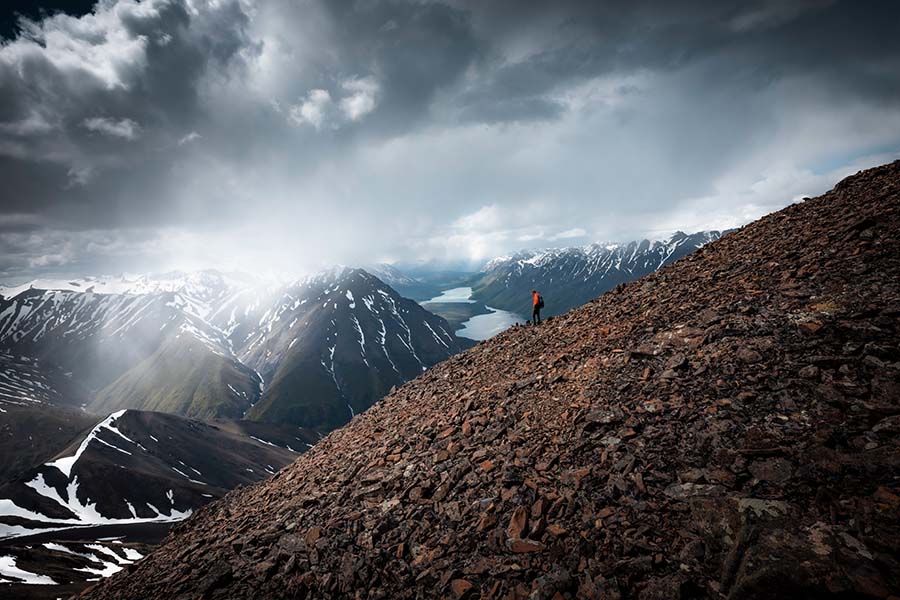
I still can’t get used to the quiet. Even after 14 seasons of hiking in the Yukon, I remain startled by just how empty the trails here can be.
It’s a crisp bluebird Saturday on the Auriol Trail, one of a handful of established, moderate day hikes in the vast wilderness of Kluane National Park. Apart from the grizzly bears and moose that I know can’t be too far away, my little group seems to have the place to ourselves.
The narrow, well-beaten trail climbs gradually through waist-high buckbrush and skinny northern trees, a mix of poplar and spruce. A two-lane road that connects the town of Haines Junction, Yukon, to the small port of Haines, Alaska, is behind us. Ahead are the snowy peaks of the Auriol range.
My dog, a husky recently retired from a racing team, leads the way, straining at his leash. The only thing he likes better than pulling is running free, but we’ll be sparing the local wildlife his attentions.
Kluane National Park and Reserve fills the southwest corner of the Yukon. It’s home to the Kluane icefield, which is the world’s largest remaining mass of glacial ice outside the polar regions, and to Mount Logan, Canada’s highest peak.
Together with three adjoining parks – British Columbia’s Tatshenshini-Alsek provincial park and Alaska’s Glacier Bay and Wrangell-St. Elias national parks – Kluane forms a massive UNESCO World Heritage Site. The mountains filling the horizon as we hike are just the nearest edge of a swath of peaks that go on and on.
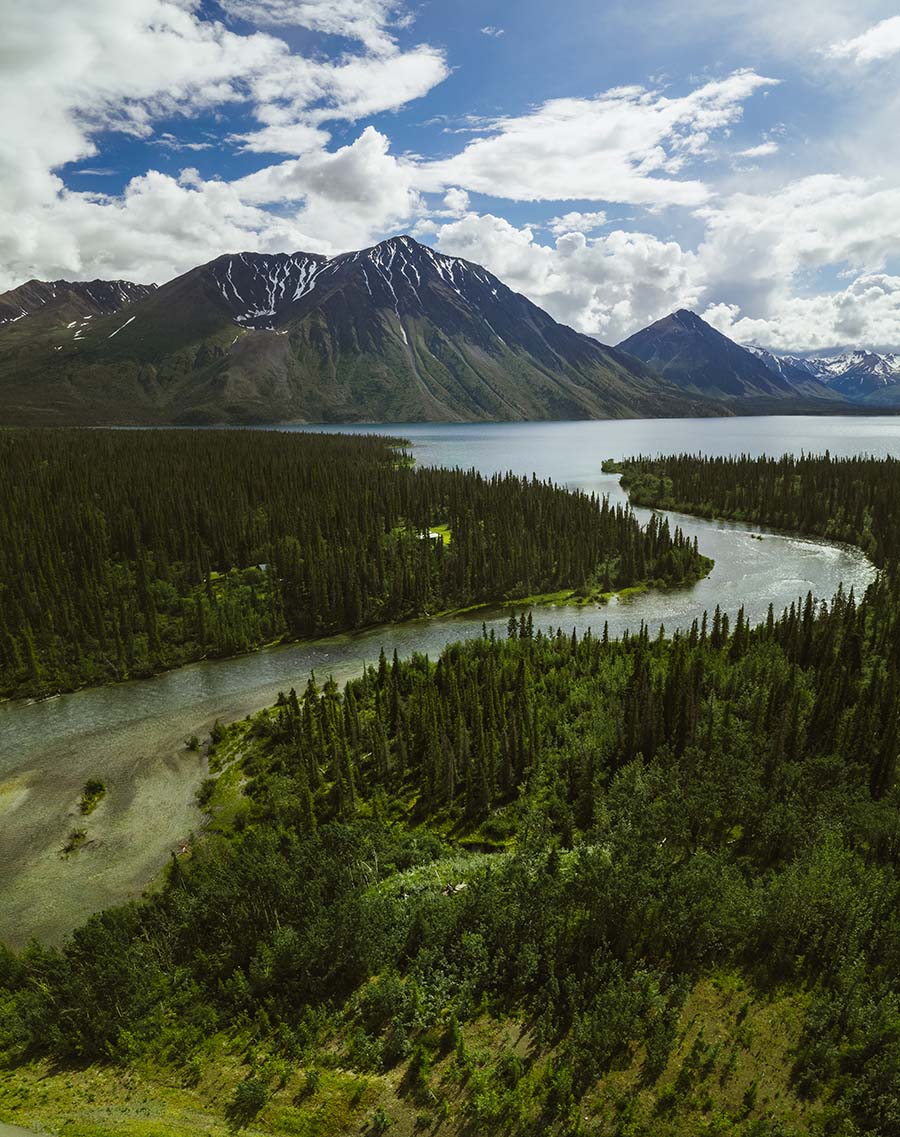
The Auriol Trail is a 15-kilometre loop, gaining 400 metres in elevation over the first eight kilometres or so before winding back down to the trailhead. It never climbs above the treeline. But at its apex, experienced hikers have the option to keep going, off-trail, and follow a creek and then a rocky moraine up to a high alpine bowl.
As we get closer to the top of the loop, we spot a bright splash of colour in the bowl: a small tent, belonging to someone with more ambitious plans than we have for the day. It’s the only indication that we’re not completely alone out here.
We skirt around a small lake, and my girlfriend stops to take some photos, crouching by the edge of the water. I hang back with the dog, so he doesn’t wade in and spoil the perfect reflection of trees and sky on the surface.
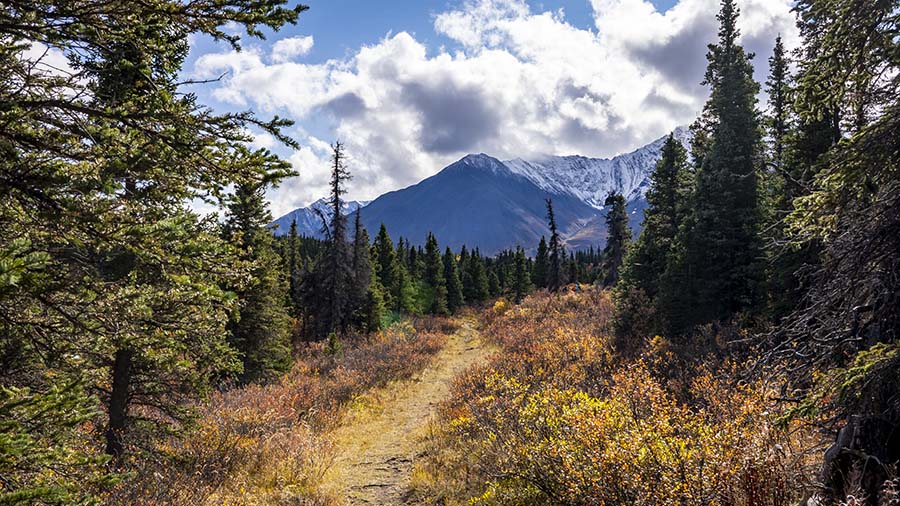
On the way back down, the silence is broken. Our precautionary shouts of “Hey, bear!” are answered by another group’s similar calls on the trail below us, and as we cross paths with them we share the usual cheerful hikers’ small talk.
Further down we meet another small group – musicians we know from back home in Whitehorse, a two-hour drive away. They’d played a show in Haines Junction the night before. This is classic Yukon hiking: see almost nobody, but the person you do see is someone you know.
There are shorter, easier hikes in Kluane: the peaceful little Dezadeash River Trail, or the out-and-back to scenic St. Elias Lake. There are more starkly dramatic hikes, such as the steep trail up King’s Throne, and there are challenging multiday hikes, too. (The gem of these is the Donjek route, a difficult 8- to 10-day adventure that takes hikers right to the edge of a glacier.)
But today, for me, this is the perfect ratio of exertion to scenery and of solitude to community. As I near the trailhead and our waiting car, I feel like Goldilocks gobbling up baby bear’s porridge: the Auriol Trail was just right.
Eva Holland lives in Whitehorse.
Sainte-Agathe-
des-Monts,
Quebec
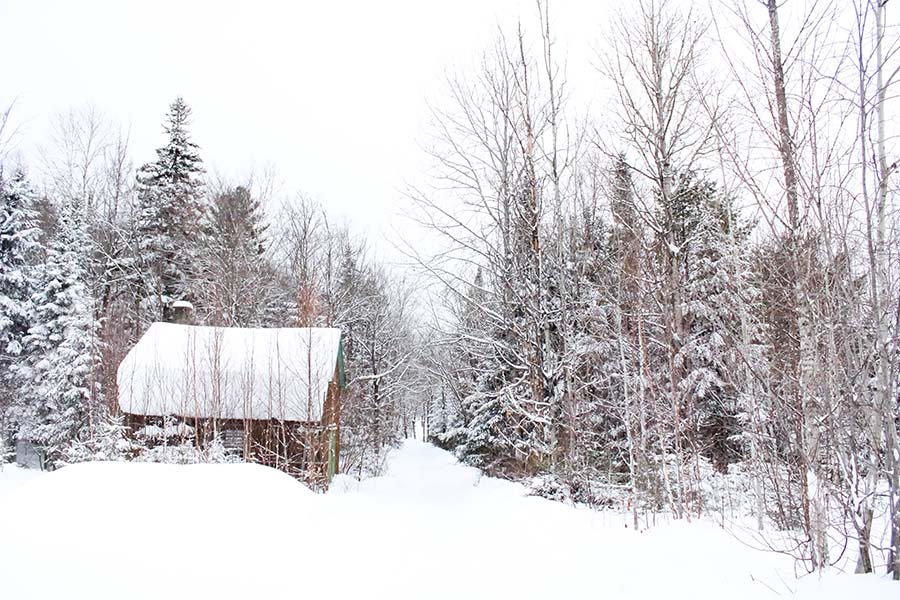
Eager to enjoy the fresh fallen snow and February sunlight peeking behind the clouds, we set out to explore the hilly snowshoe trails on the edge of Lac des Sables in Sainte-Agathe-des-Monts, in the Laurentians region of Quebec.
Montrealers have long loved Sainte-Agathe-des-Monts as a summer getaway, thanks to its magnificent beaches along Lac des Sables and its sailing school. In winter, despite its vast array of activities, it remained in the shadows of Mont-Tremblant or Saint-Sauveur-des-Monts for snow sports. This past winter, we enjoyed rediscovering the quiet side of this area.
During our hike, sunlight sparkled off the fresh snowflakes dangling off each branch as we walked in meditative unison. We traipsed past endless tall pines on the trails of the 57-hectare StoneHaven Le Manoir estate. We loved wandering off the beaten path too, breaking fresh tracks to discover an abandoned wooden barn covered in the heavy snowfall from the night before.
As we breathlessly made our way uphill, the view from the summit proved worth the effort: a splendid panorama of the lake with the eastern side of the Laurentian Mountains in the distance. We enjoyed a precious few moments of total stillness.
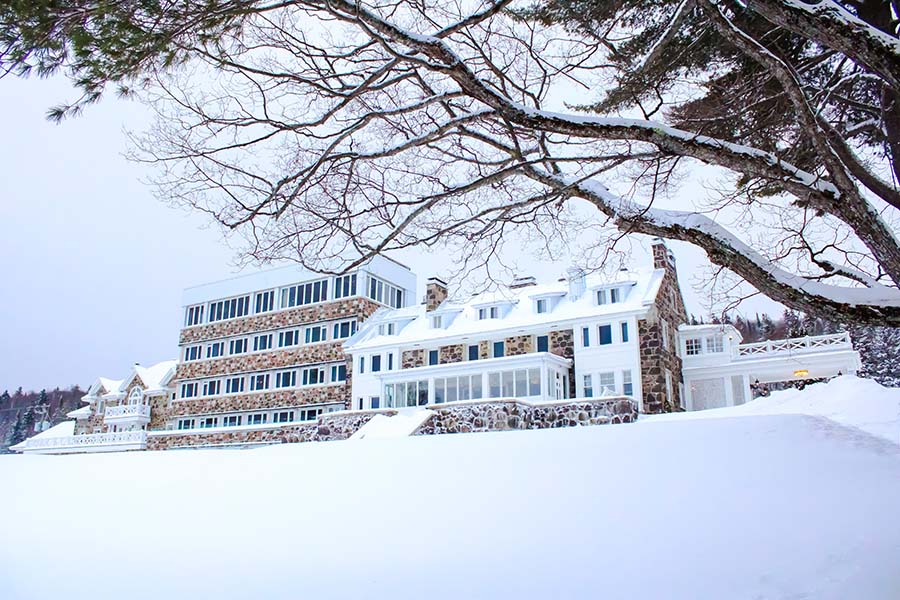

On the way down, the only sounds were the crunch of our steps in the deep snow and the occasional chirp of a bird or a squirrel. Hiking in winter is a great way to connect with nature and yourself, which we deeply needed. We vowed to unplug over the next few days.
For me, the fresh mountain air generated an instant feeling of wellness and closeness. I’m not the first to notice this, either: this region overlooking Lac des Sables enchanted Douglas Lorne McGibbon, a Montreal businessman of Scottish heritage, who was the first to build a sanatorium in Quebec near these grounds in 1908 (what is now the Sainte-Agathe Hospital location). We checked into McGibbon’s original lakeside mansion, now a lavishly renovated 34-room Relais & Chateaux hotel.
Sometimes the most memorable discoveries are made not far from home. The irony that, decades ago, we used to live not very far away from this glorious hotel and these trails but had no idea they existed was not lost on us.
As my husband lay down for a nap in our room, I slipped on a plush robe and met the massage therapist who soothed the well-lodged knots on my back. As the snowflakes twirled in slow motion, I noticed the clover-shaped hot tub outside. It all looked so heavenly.
Over the last few years, the hotel has been meticulously restored by new owner Georges Coulombe, who took care to honour the estate’s heritage with carefully selected antiques, a museum-worthy fine art collection, magnificent 1930s light fixtures and even a vintage elevator from that era. You’ll feel like you’ve travelled back in time. Dining at the hotel was exquisite, too, and the seven-course tasting menu was a flavourful and unforgettable tour through Quebec’s highest-quality local products.
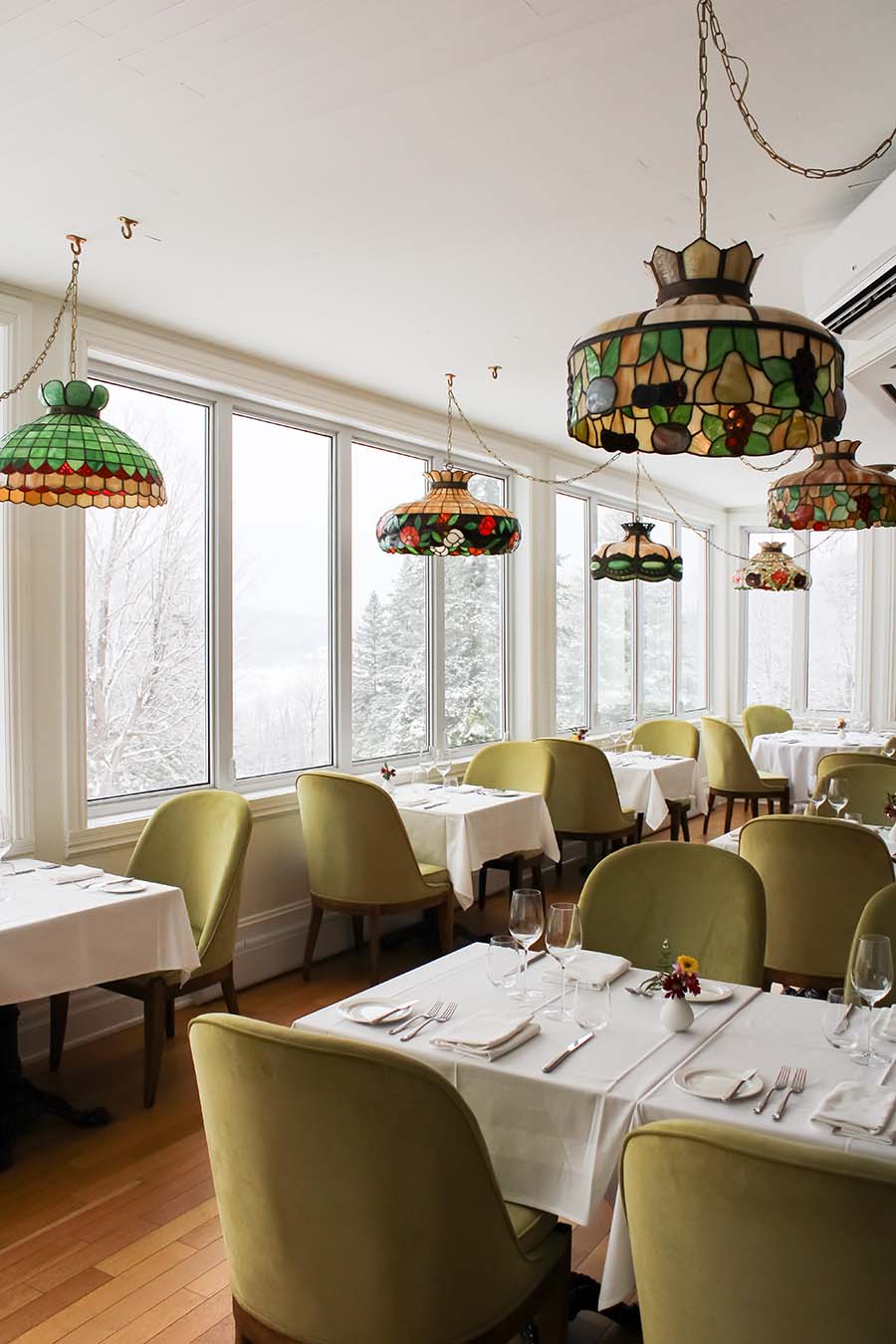
StoneHaven Le Manoir is a good place to enjoy “la vie de château,” the French art of the good life. In fact, we were told that McGibbon, the original owner, was known as the Gatsby of the Laurentians, often throwing lavish parties with his wife and hosting their guests for days. We can’t wait to come back for another visit in the summer when the lake turns into a watersports playground. We shall dream of a scenic picnic, carefully packed by the Chef’s brigade, to further explore the stunning views by bike or boat.
Marie-Piere Belisle-Kennedy lives in Chelsea, Que.
West Point,
Prince Edward Island
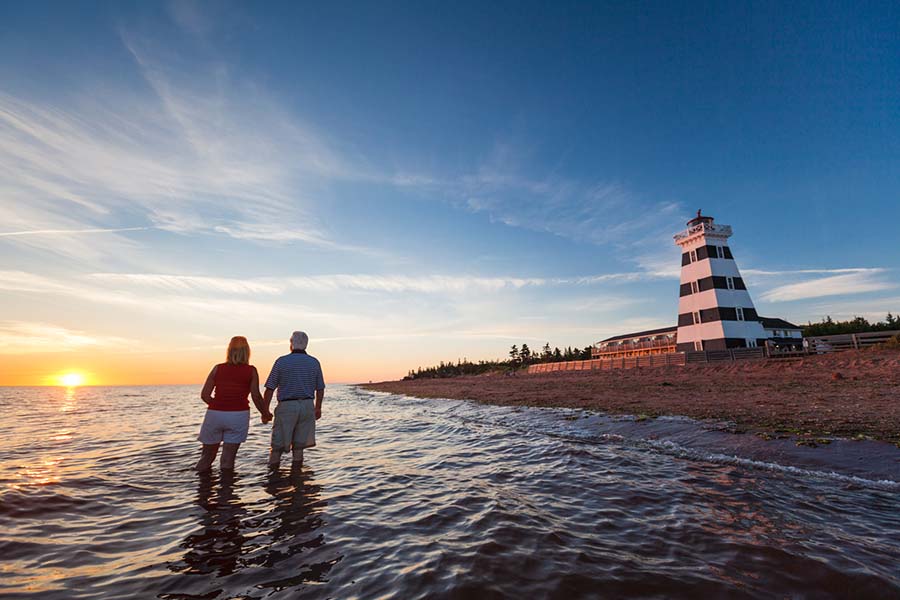
Ask any Prince Edward Islander about the West Point Lighthouse and the first comment is usually how far away it is.
Long commutes are rare here and anyplace more than half an hour away constitutes a “long drive.” For all but a handful of Islanders, this sentinel, which has been guiding ships through the western edge of Northumberland Strait since 1875, falls in to that category.
Maritimers have a well deserved reputation for being happiest when we are close to the water and I have to plead guilty on that score. So the “long commute” to West Point lighthouse is well worth it for me.
The lighthouse is painted with four black stripes that look like a giant’s belt with the windows in the middle resembling belt buckles. At the top is a red dome navigation light with an outdoor deck offering a commanding view in all directions. It’s found in an area most islanders refer to as “up west” (as opposed to out west, which usually refers to Alberta). When you turn off Highway 2, pay close attention to the directional markers as there are a number of twists and turns. The fishing buoys hanging in trees along the way not only add colour to the drive but reinforce the fact you are in fishing country.
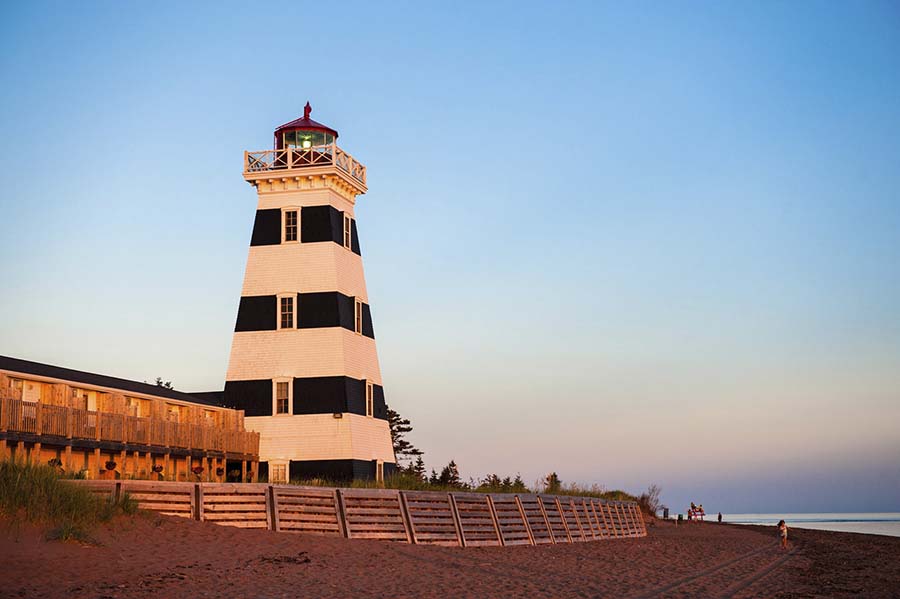
When you arrive on the coastline (officially known as Cedar Dunes Park Road) you might expect the lighthouse to be the focal point. Sorry to disappoint but the lighthouse is more subtle – at least as subtle as a 20-metre-high building can be.
The focus here is always the water. There is something about the sun shimmering on the bright blue sea on a clear day that is good for your soul. Perhaps it has something to do with the certainty that every day the tide will come in and then it will go out. The best spots for watching the sun rise and set are always near the water and what could be better than your own private lighthouse viewing room? Because not only can you enjoy the beach around West Point, but you can sleep in the lighthouse, too.
The inn has 13 rooms, including one at the top of the lighthouse. My second-floor room in an adjoining building had a balcony with a postcard view of the beach, the New Brunswick coastline and, depending on the season, a fishing boat or two. Families may prefer the Keepers Quarters where, as the name implies, the lighthouse keeper and his family lived. While most Maritime lighthouses have a long list of “keepers of the light,” West Point only had two: William Anderson MacDonald from 1875 to 1925 and Benjamin MacIsaac, who took over until 1963, when he was replaced by an electronic beacon.
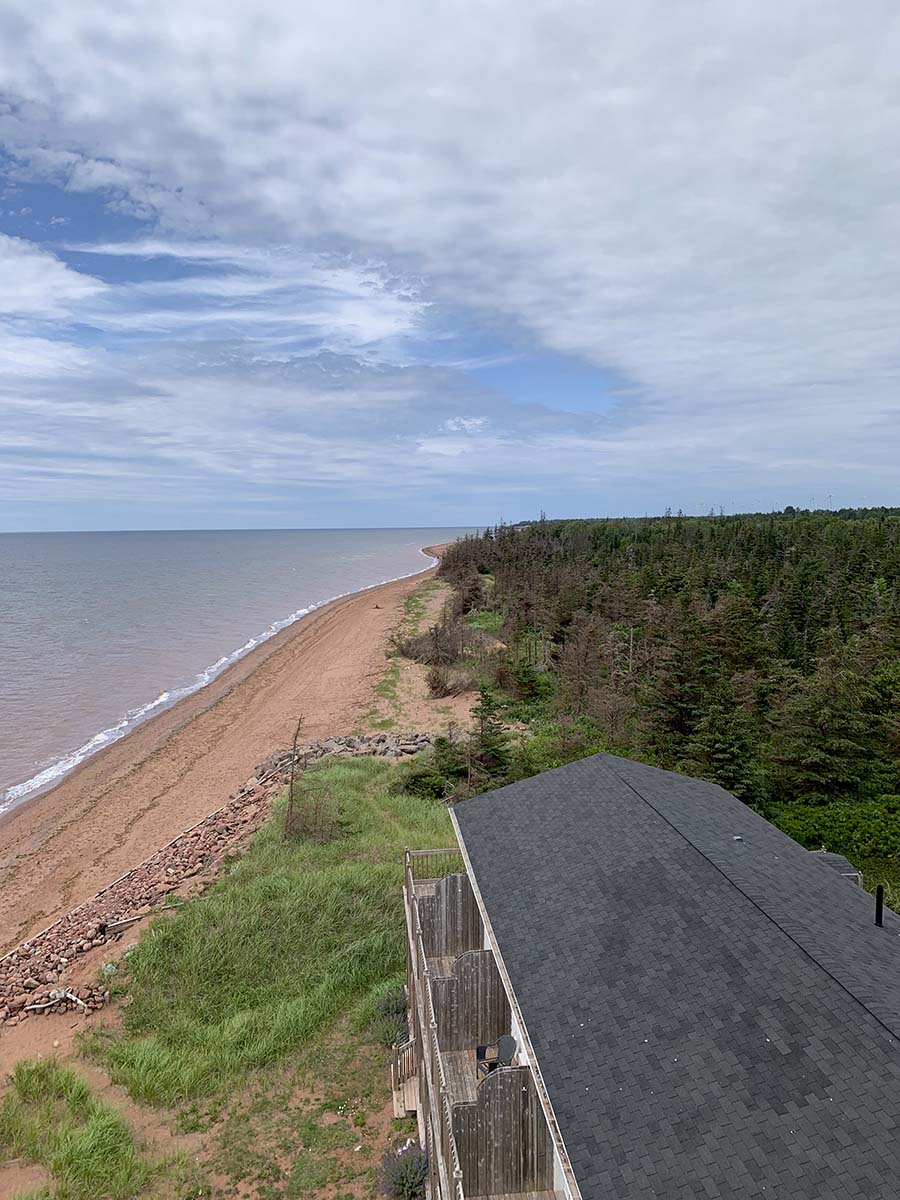

Legends abound at the lighthouse. There have been sightings of a fiery ship, a 24-metre-long sea serpent and even a bearded sea captain who roams the halls at night. In fact, the lighthouse holds ninth place on the Reader’s Digest list of Canada’s most haunted places.
What is no mystery is the impact a rapidly changing climate is having on this island treasure. Coastal erosion is bringing the edge of the building closer to the shore, and a boardwalk damaged by post-tropical storms in 2019 and 2022 is being rebuilt. But West Point is ready to welcome travellers this summer, where the view is essentially unchanged from the one William Anderson MacDonald enjoyed almost a century and a half ago. Time seems to slow down here just long enough for you to catch up. That is the real magic of the tides.
Andy Walker lives in Cornwall, PEI.
Credits
Compiled and edited by CATHERINE DAWSON MARCH; Art direction and photo editing by BENJAMIN MACDONALD; Digital design and development by CHRISTOPHER MANZA
Some travel assistance was provided by: Legendary Coasts, Eastern Newfoundland; Municipality of Chatham-Kent and Southwest Ontario Tourism Corporation; Sunshine Coast Tourism; Tourism Nova Scotia; Tourisme Laurentides and StoneHaven Le Manoir. These organizations did not review or approve the stories before publication.



